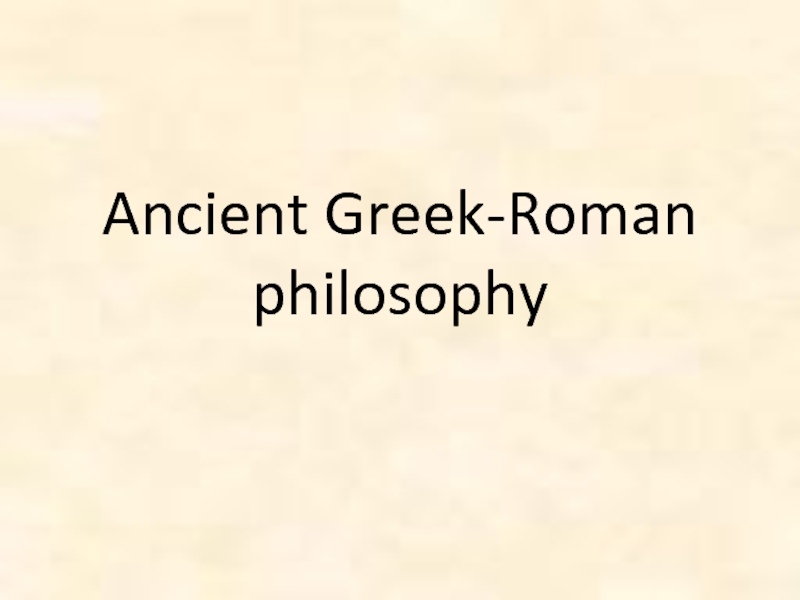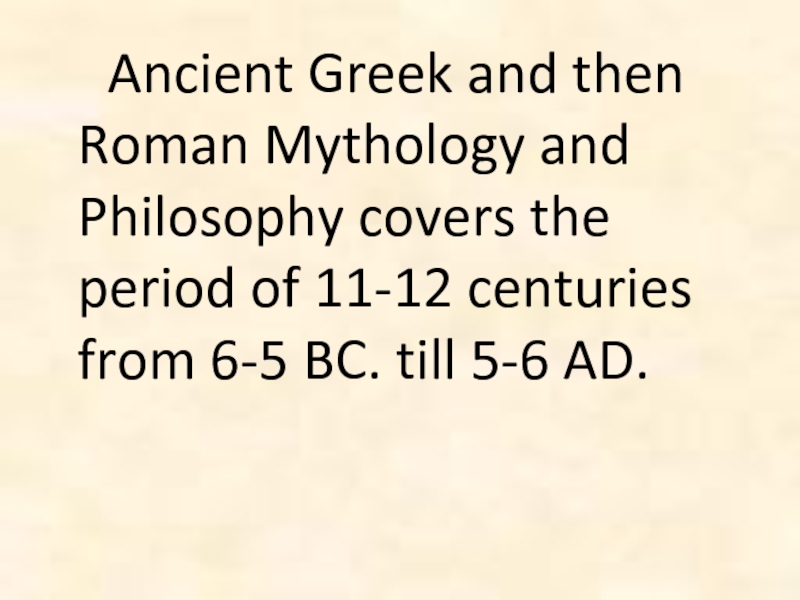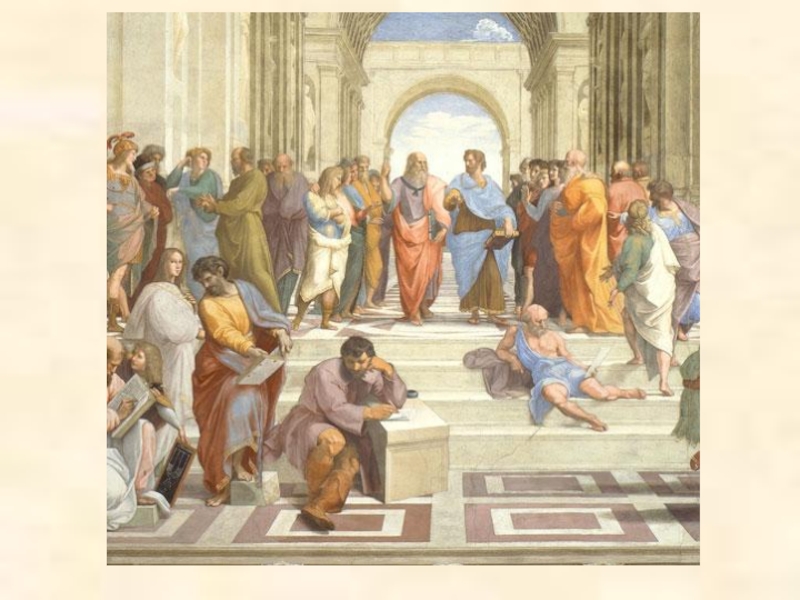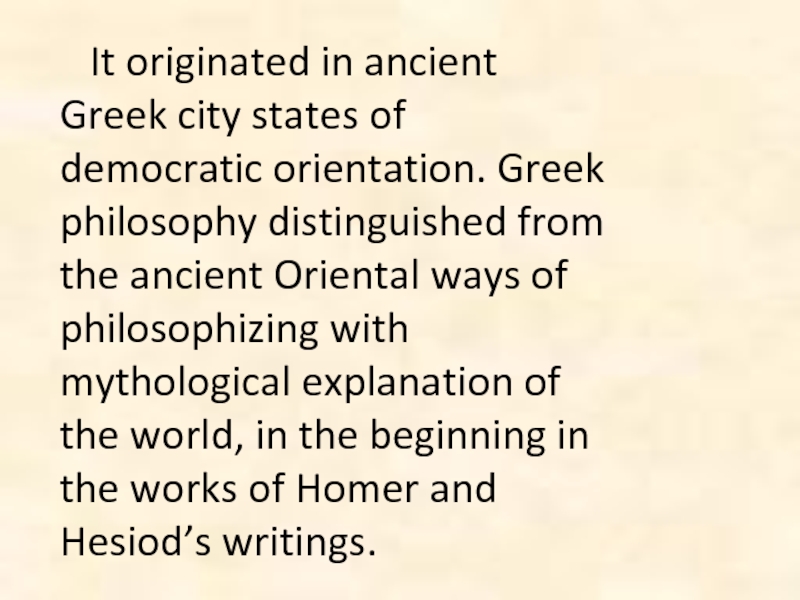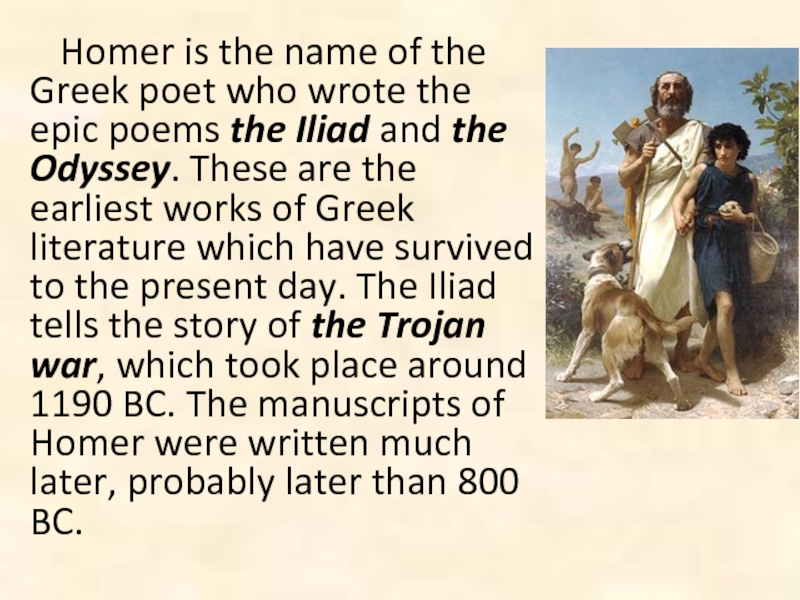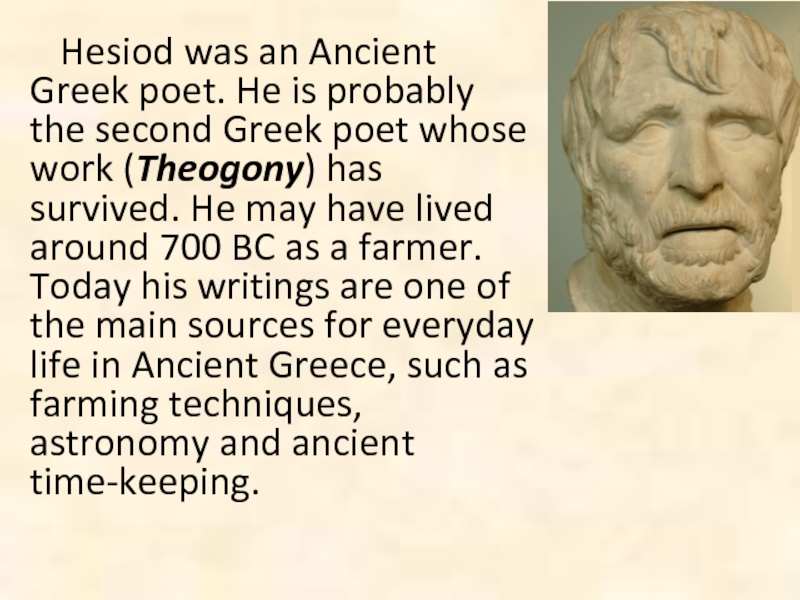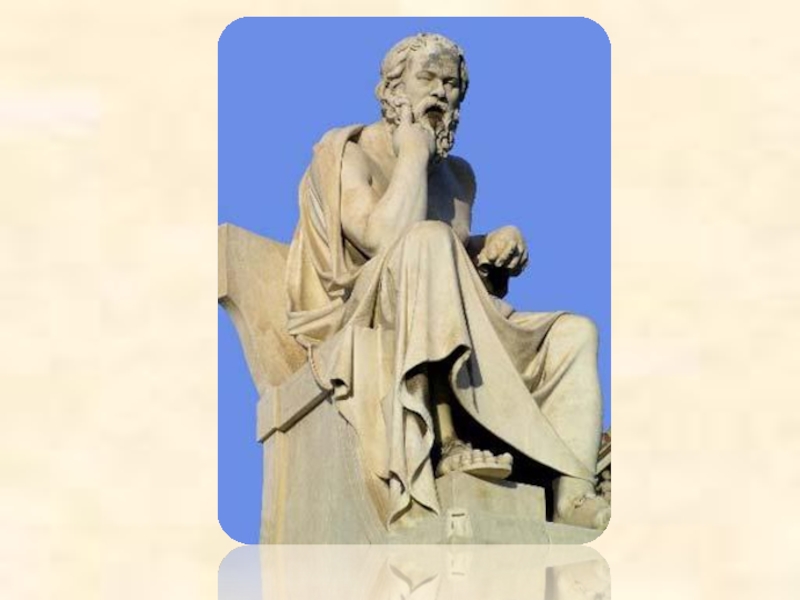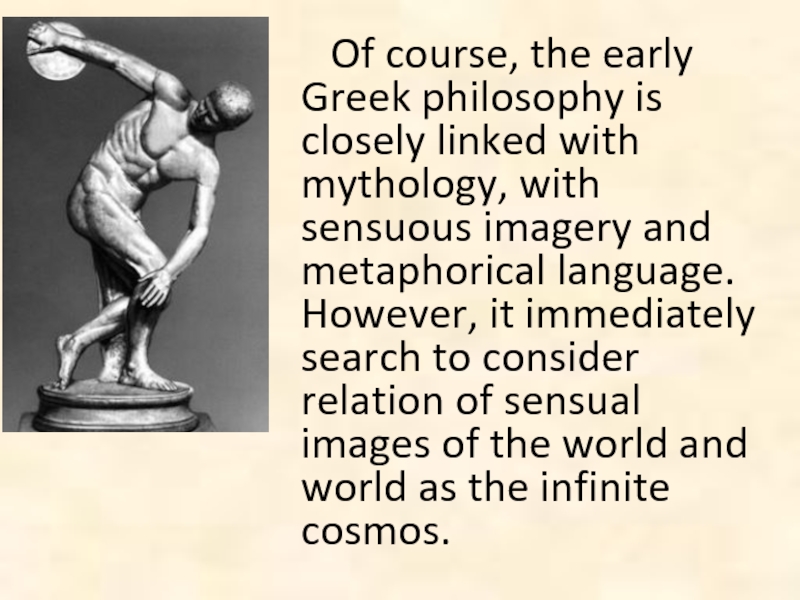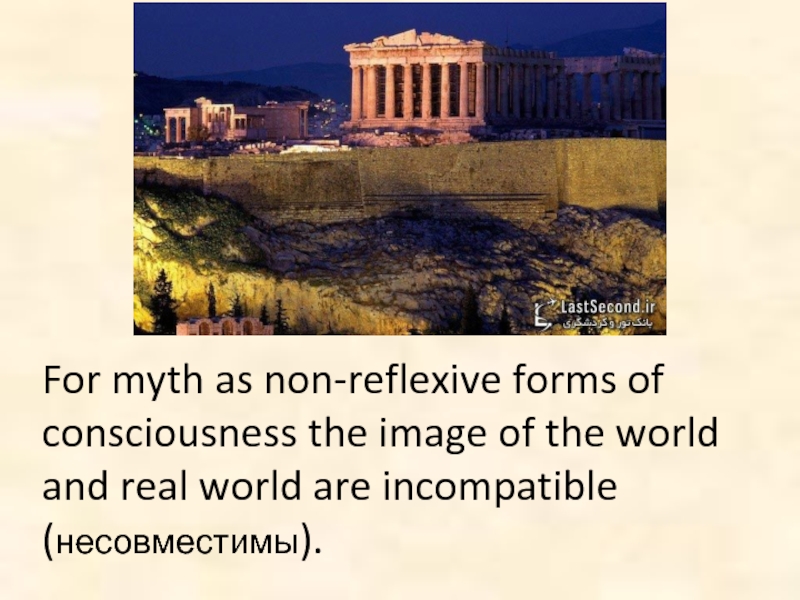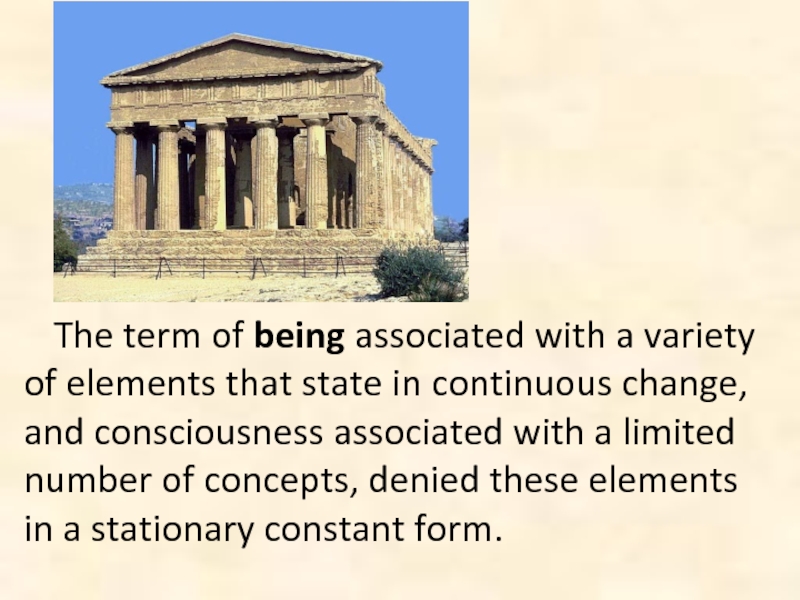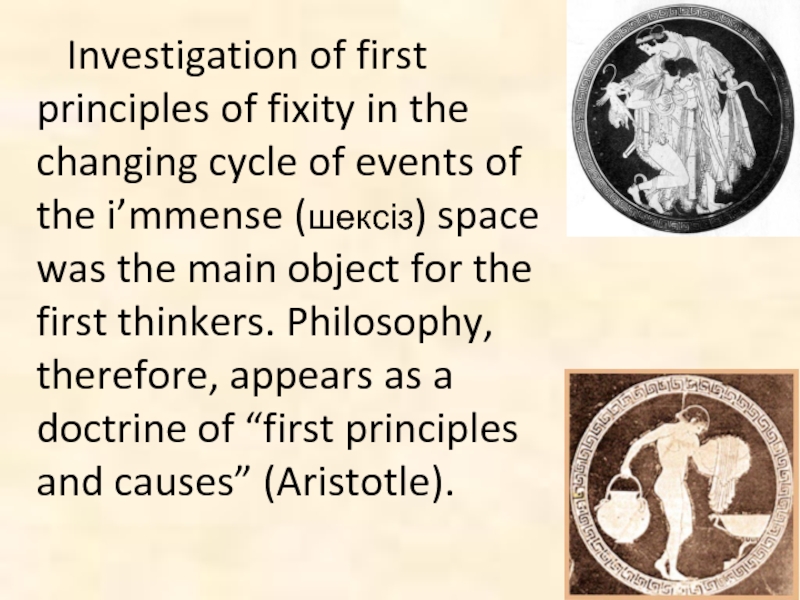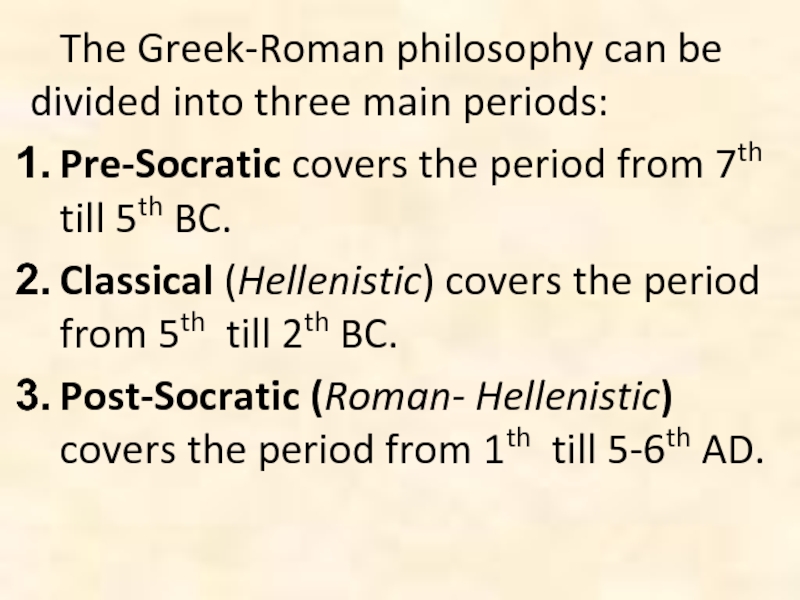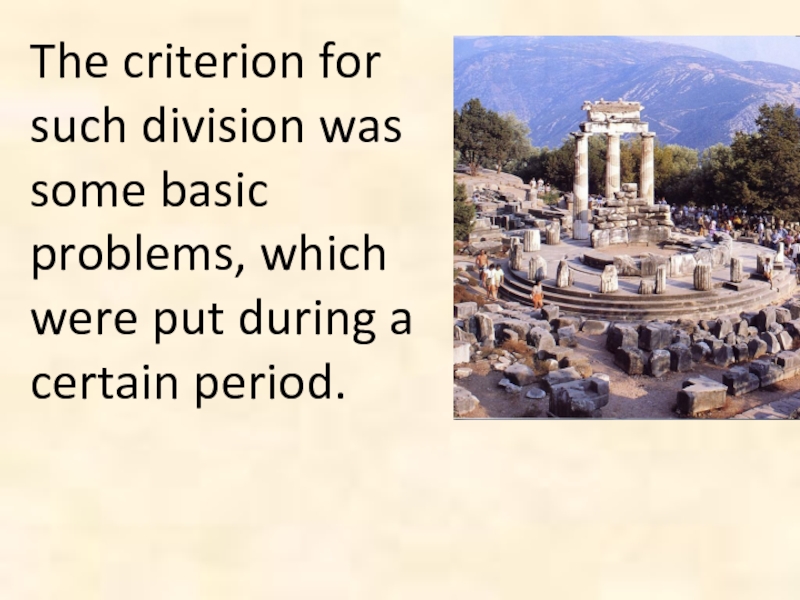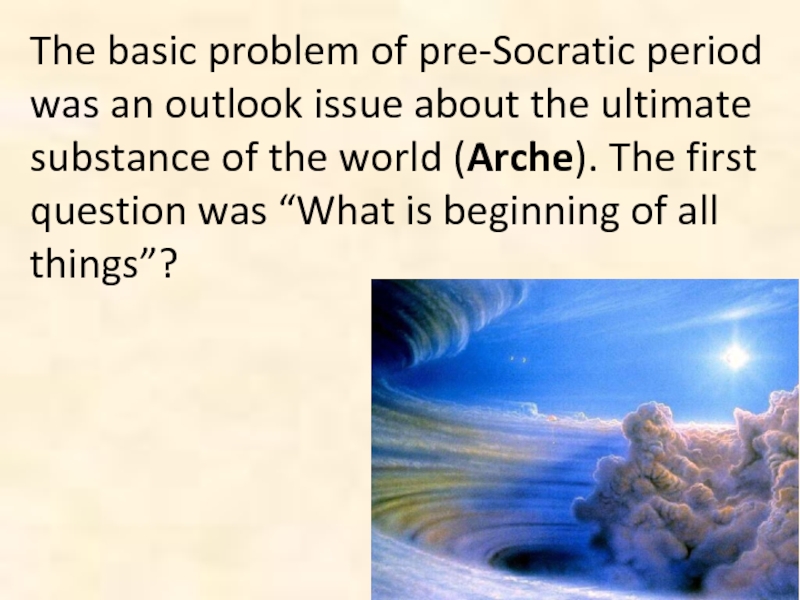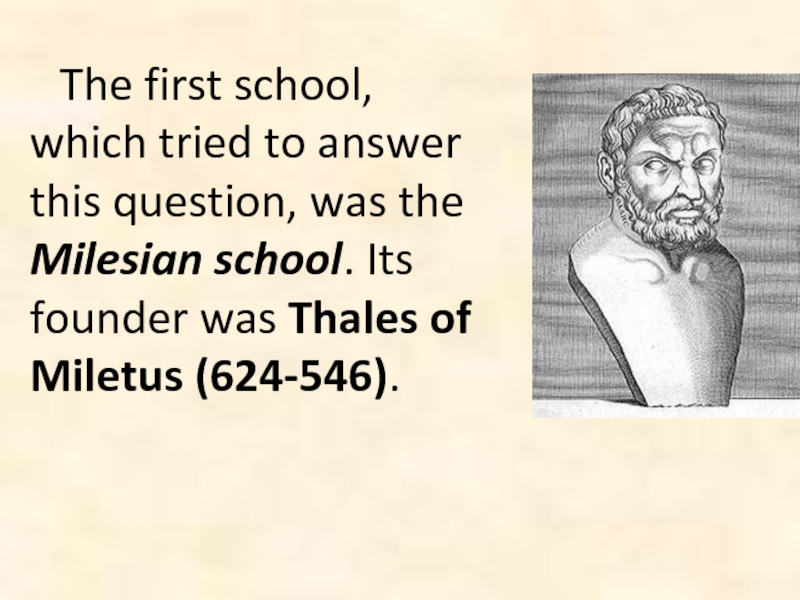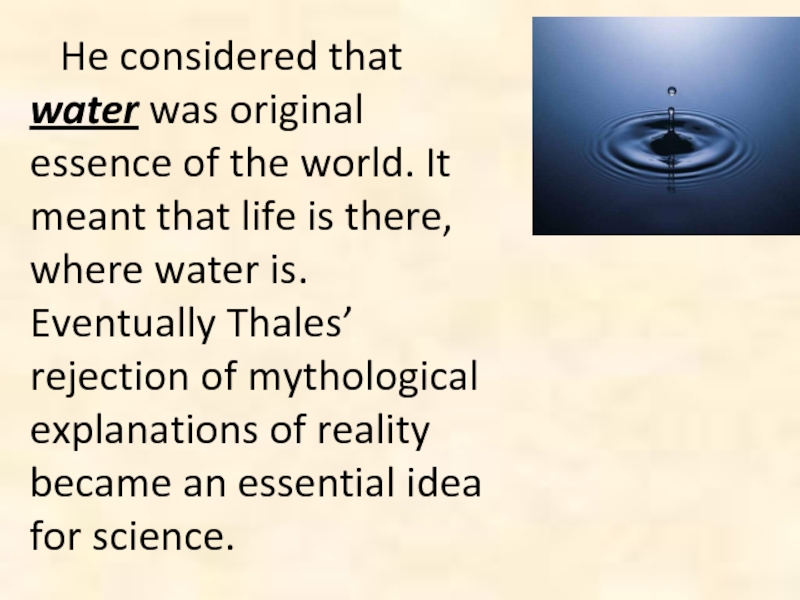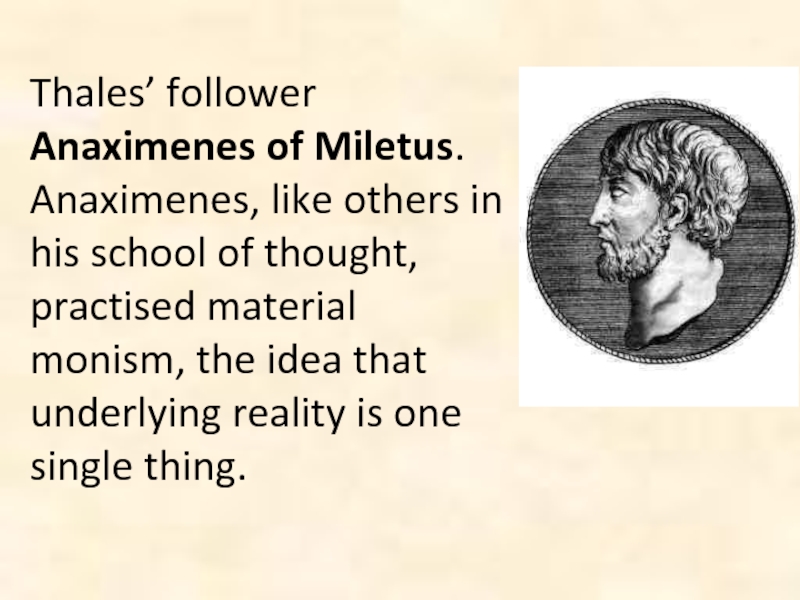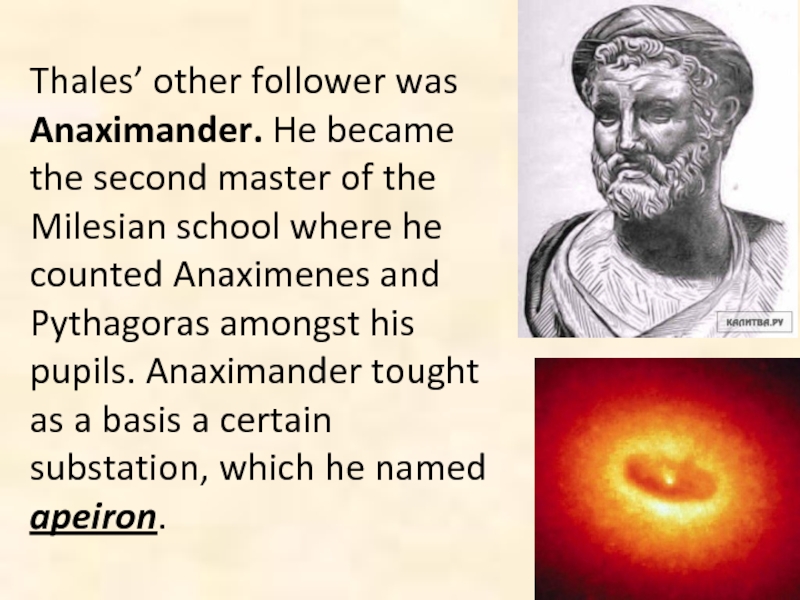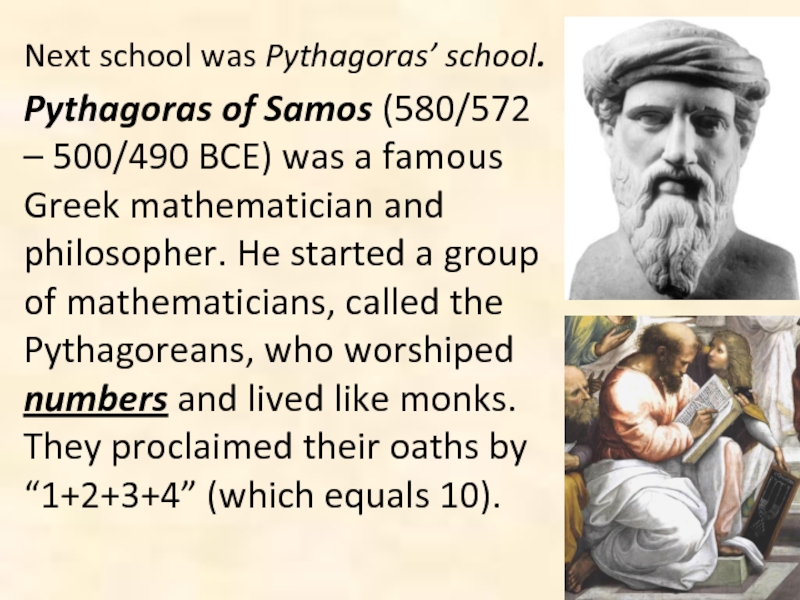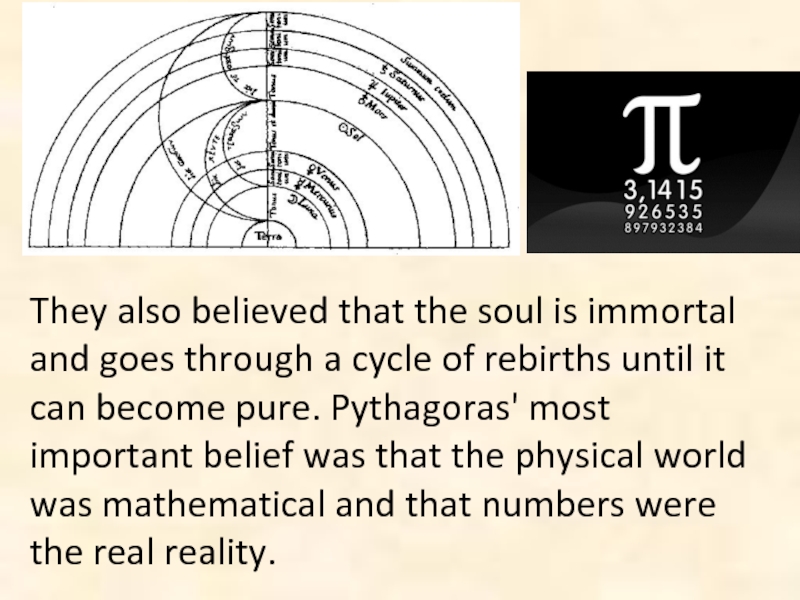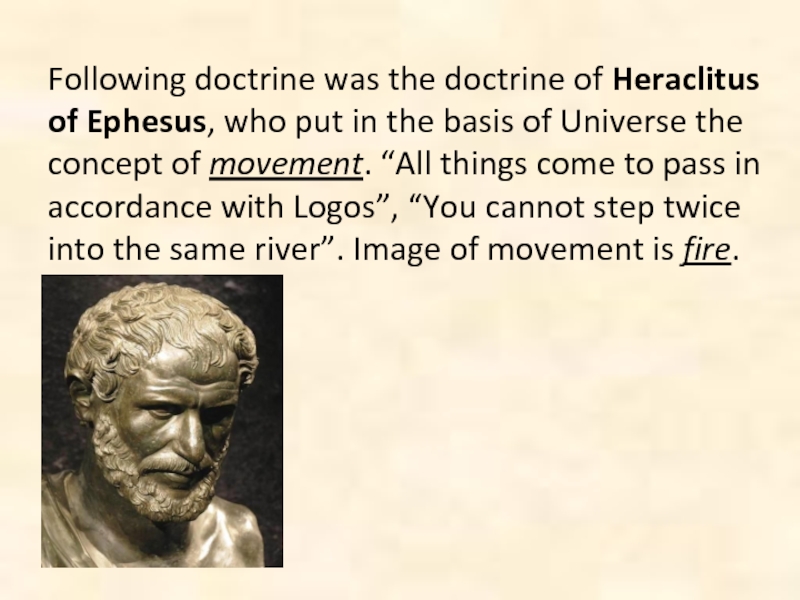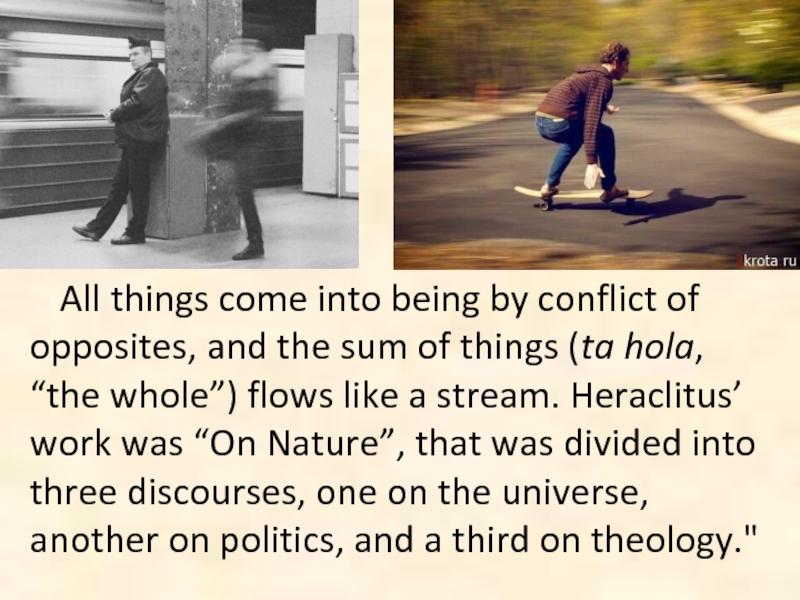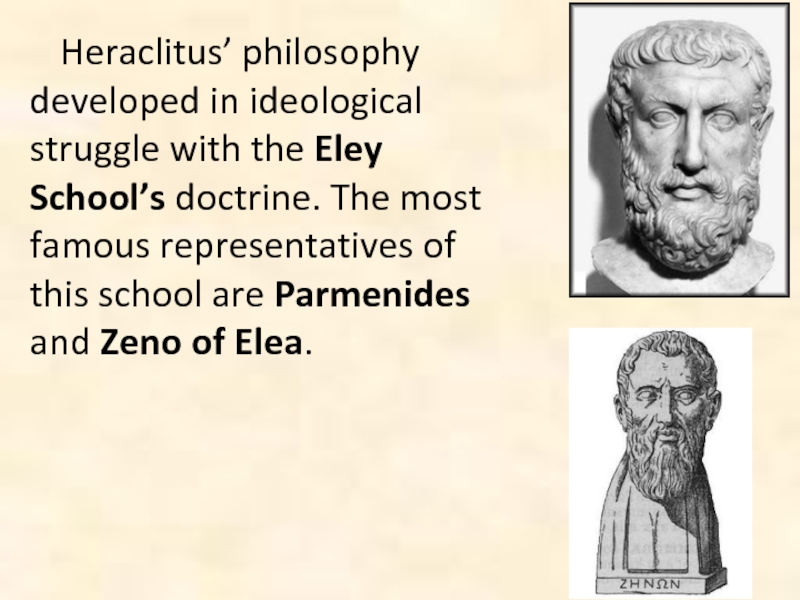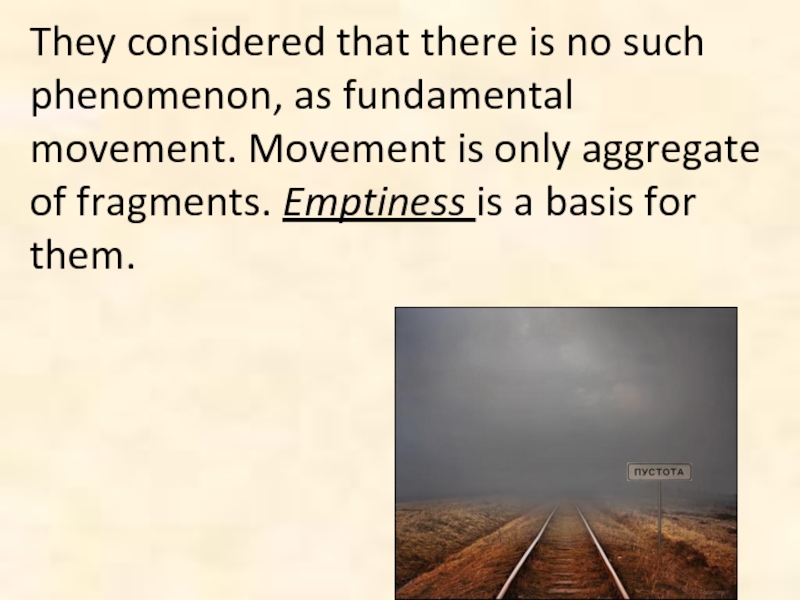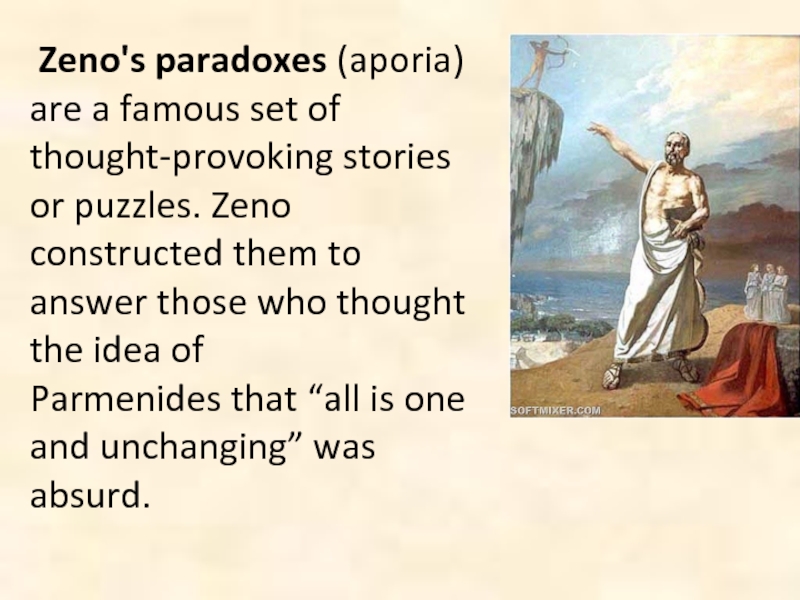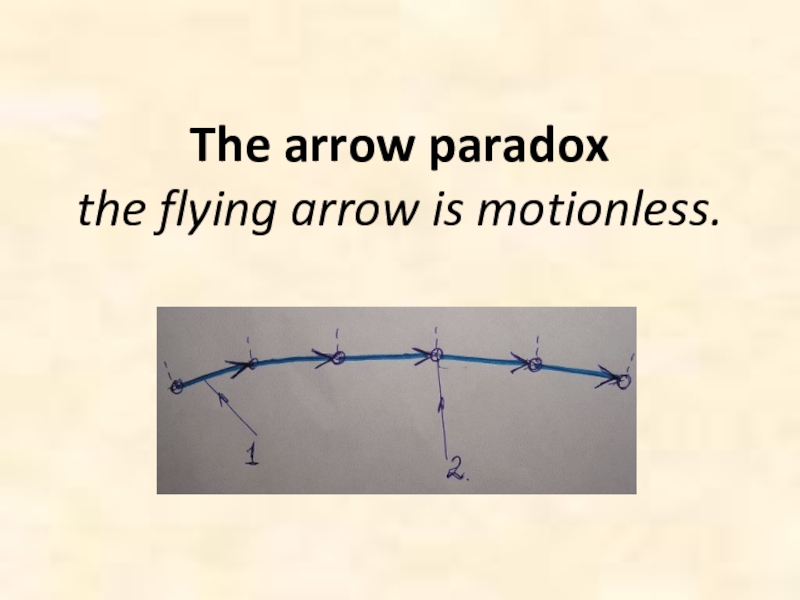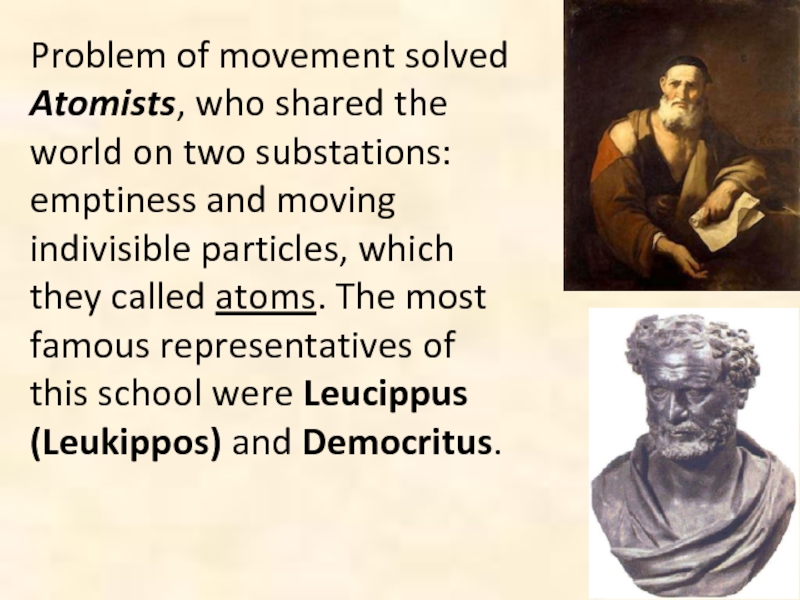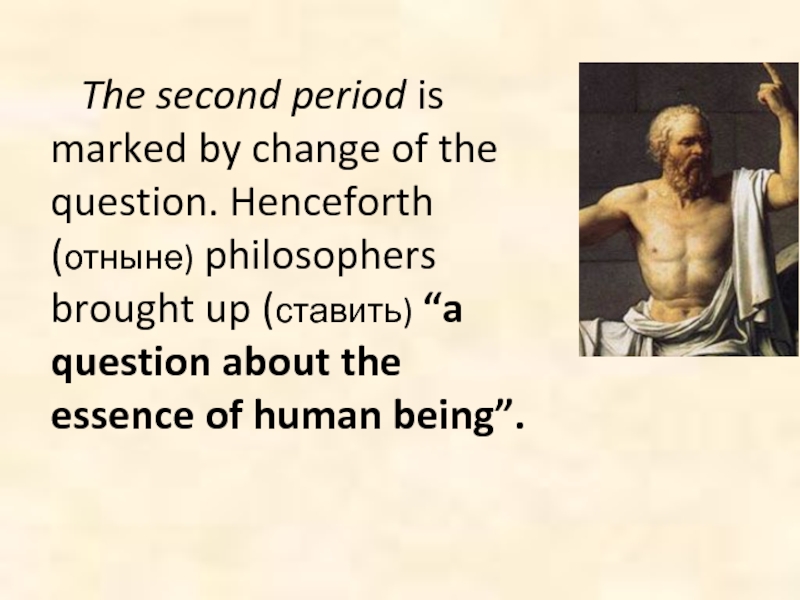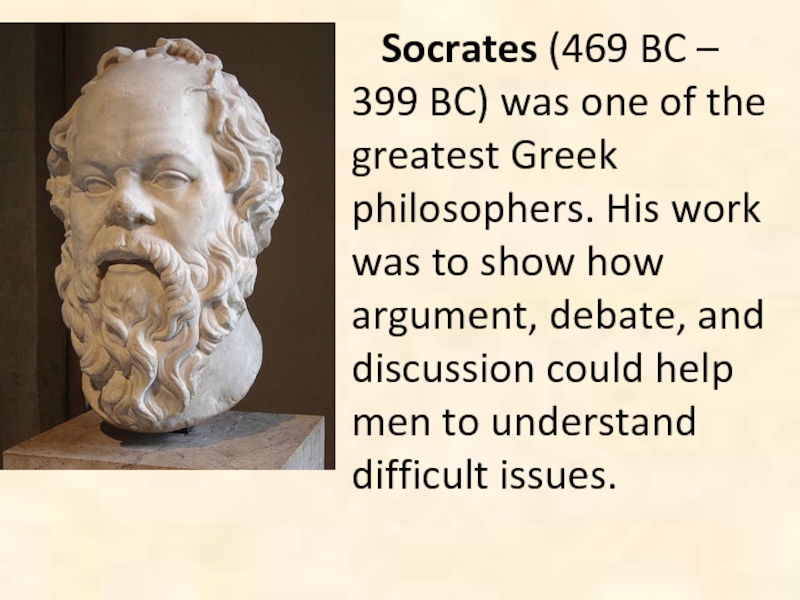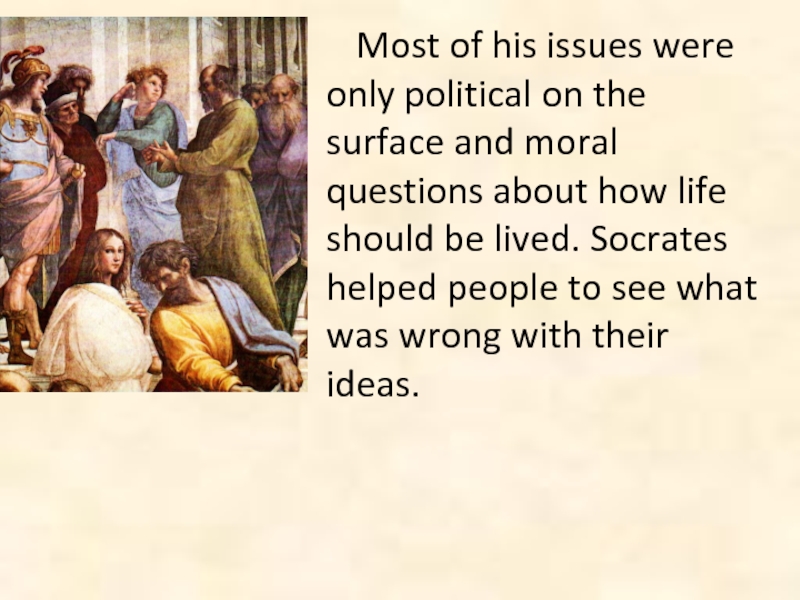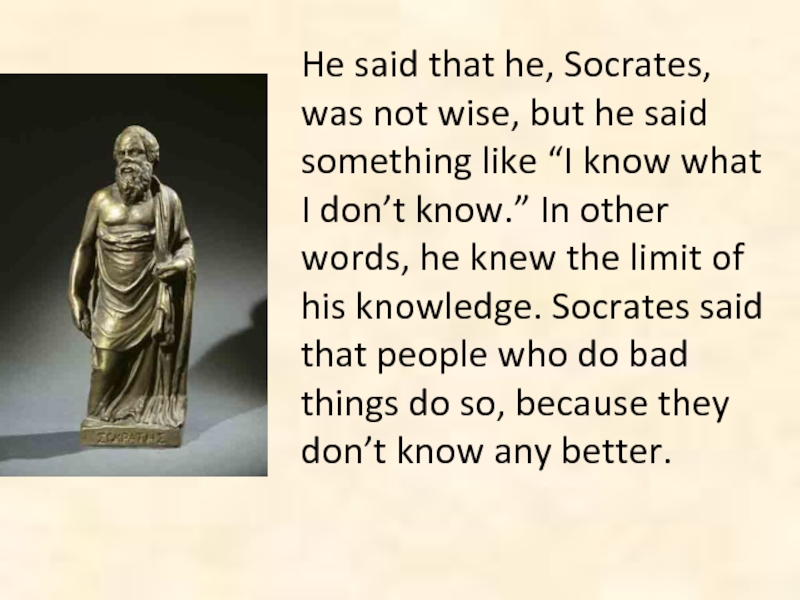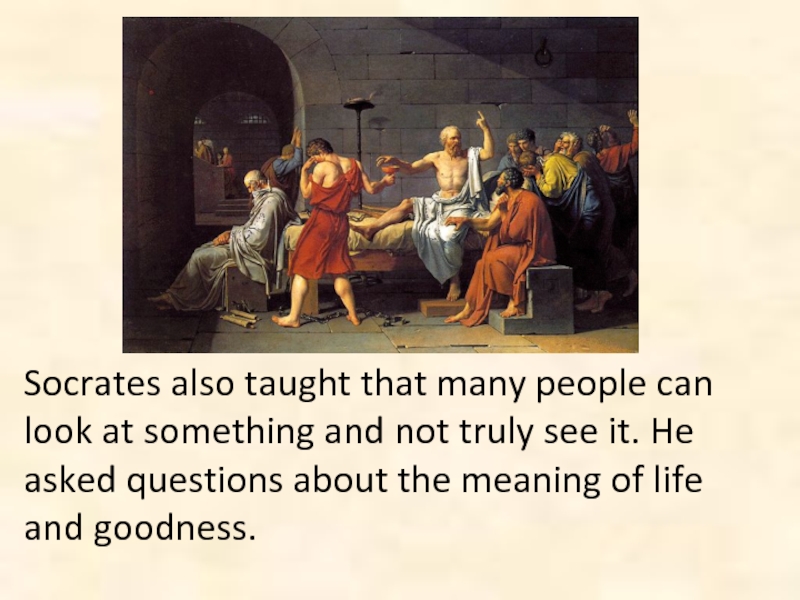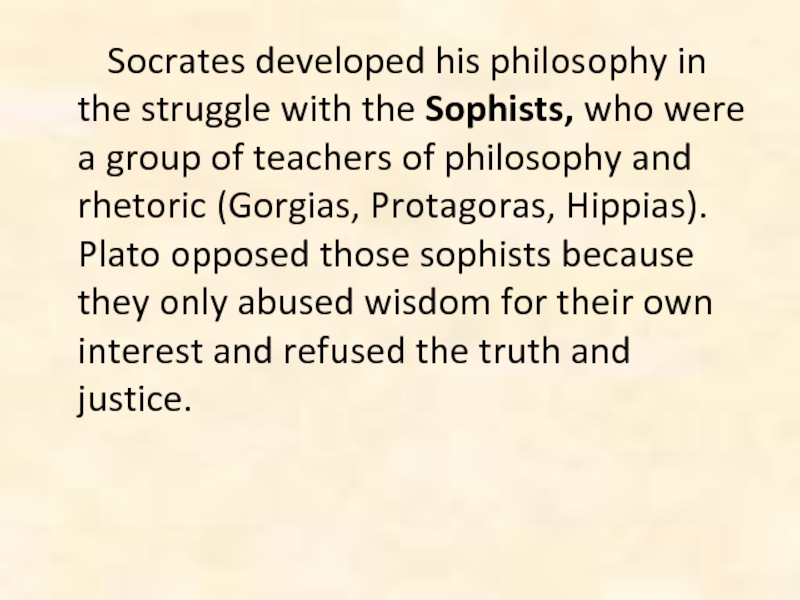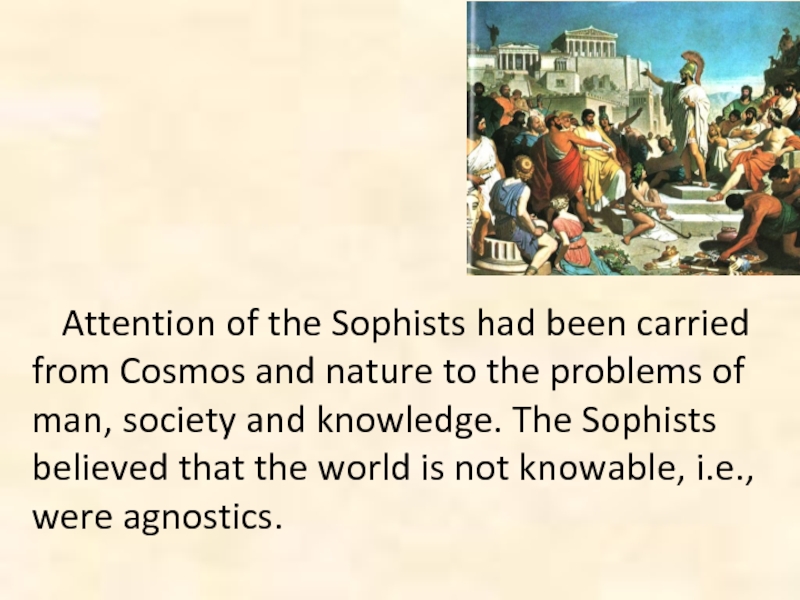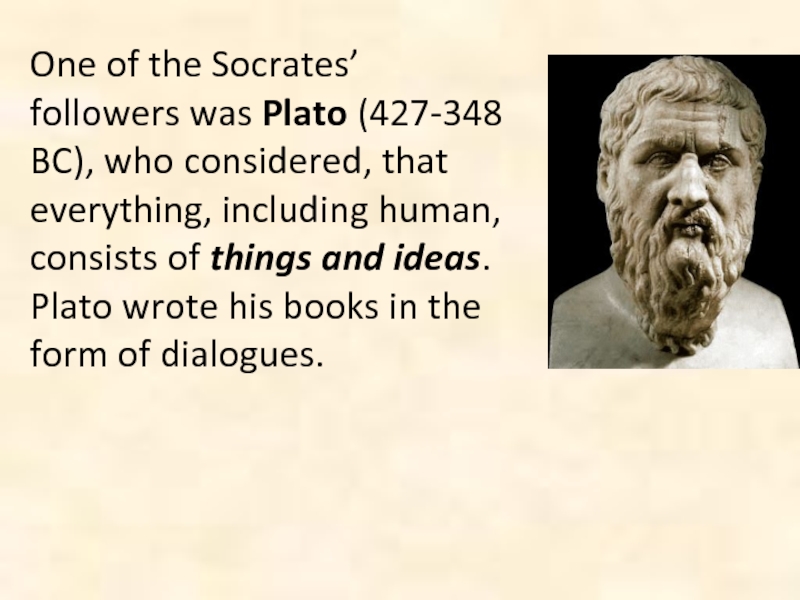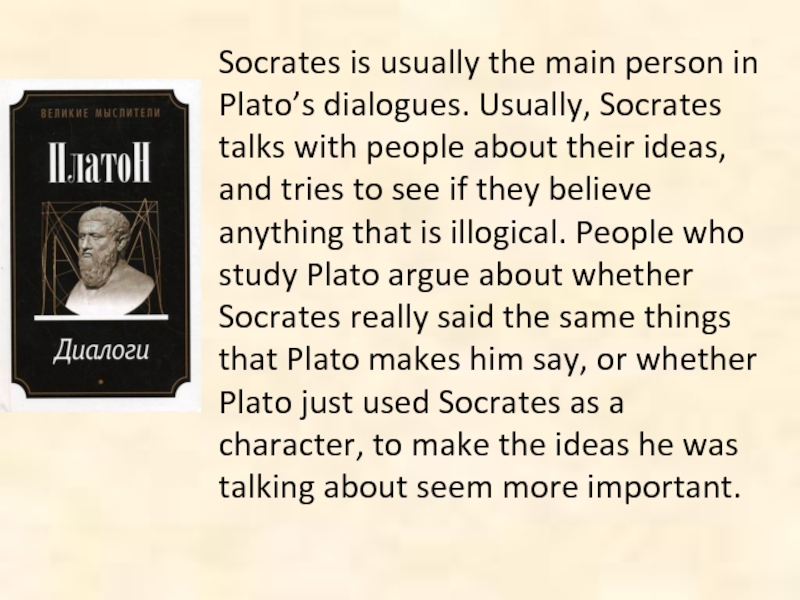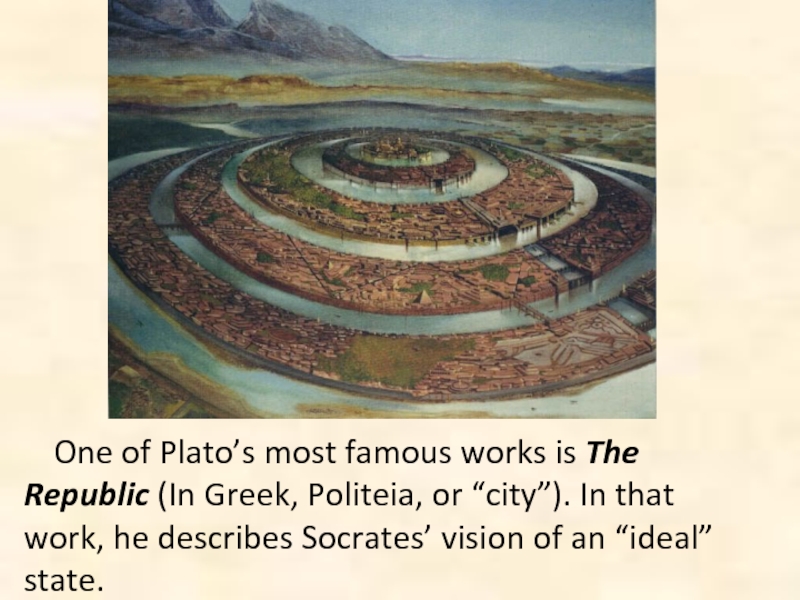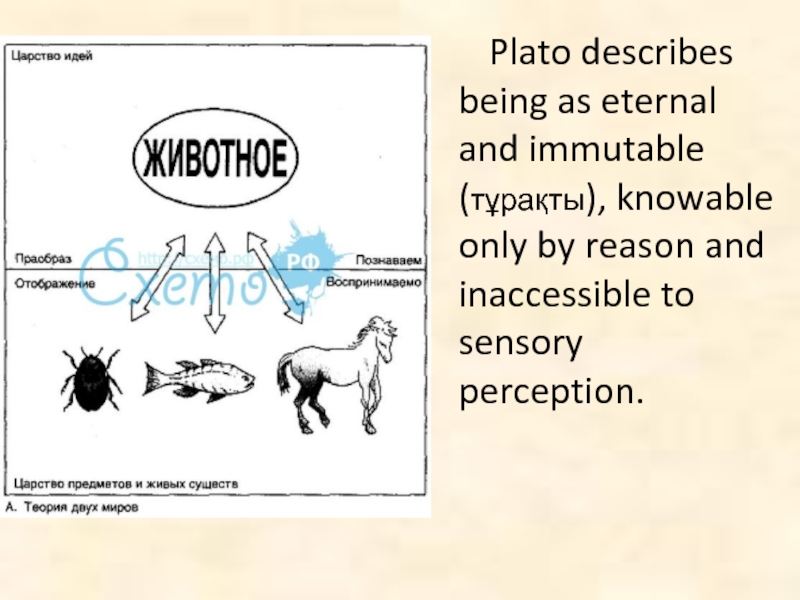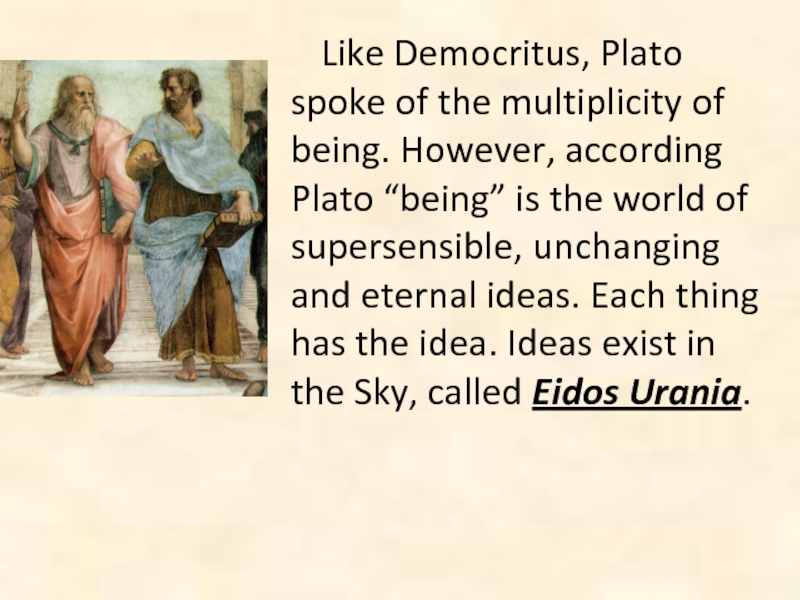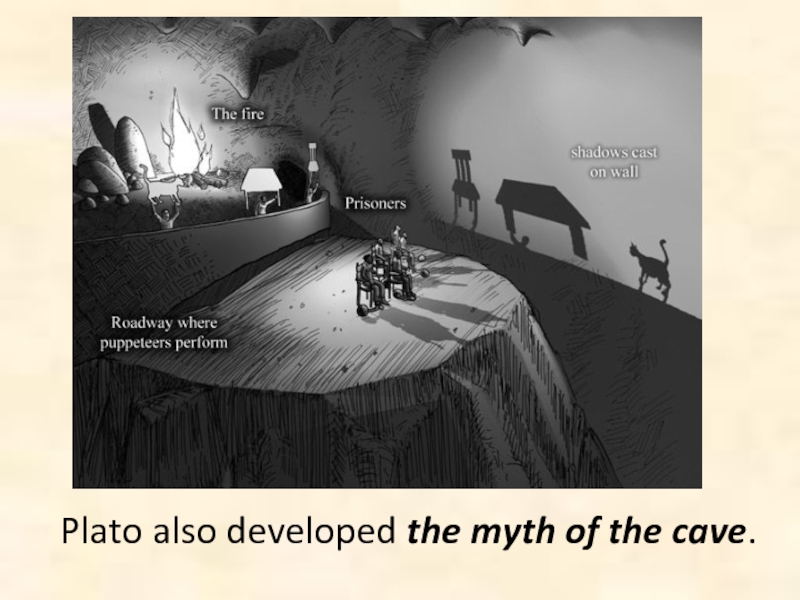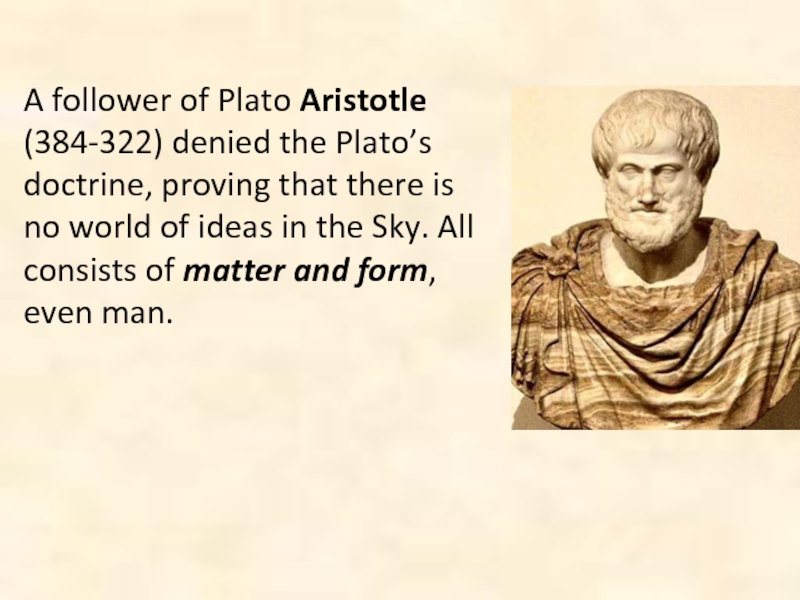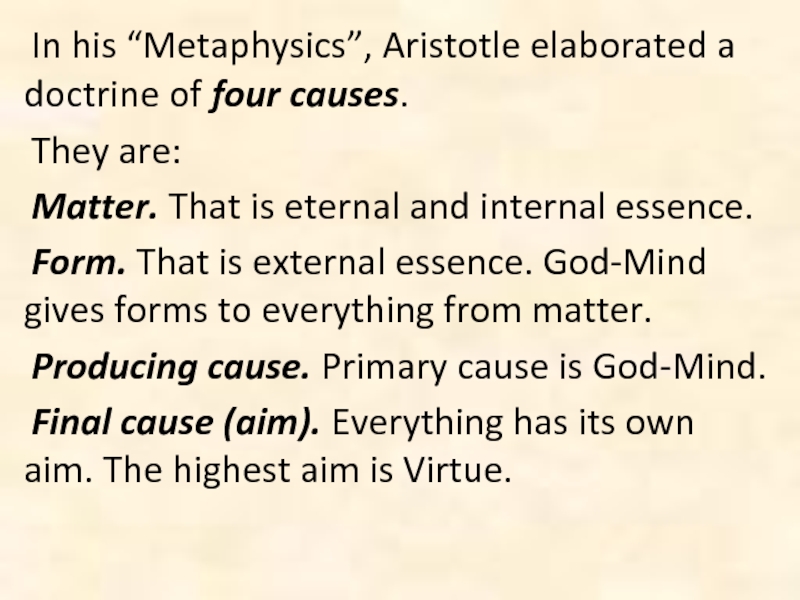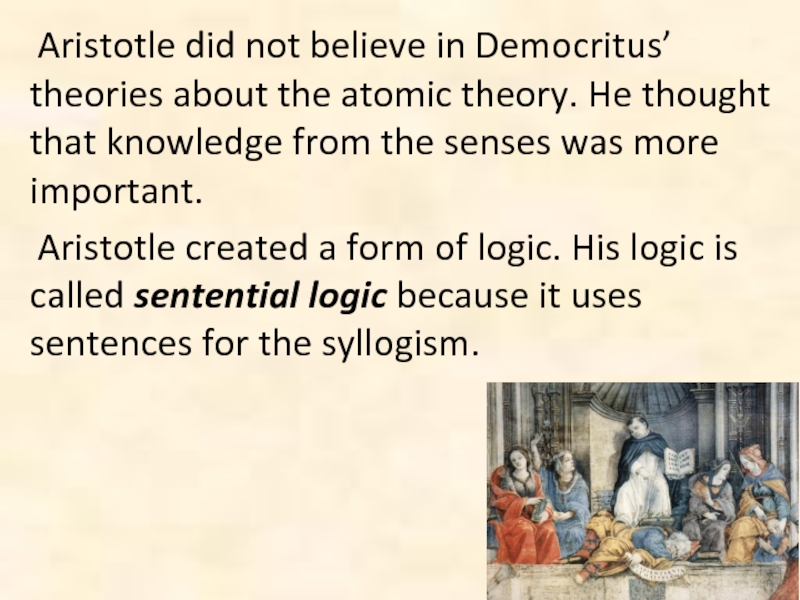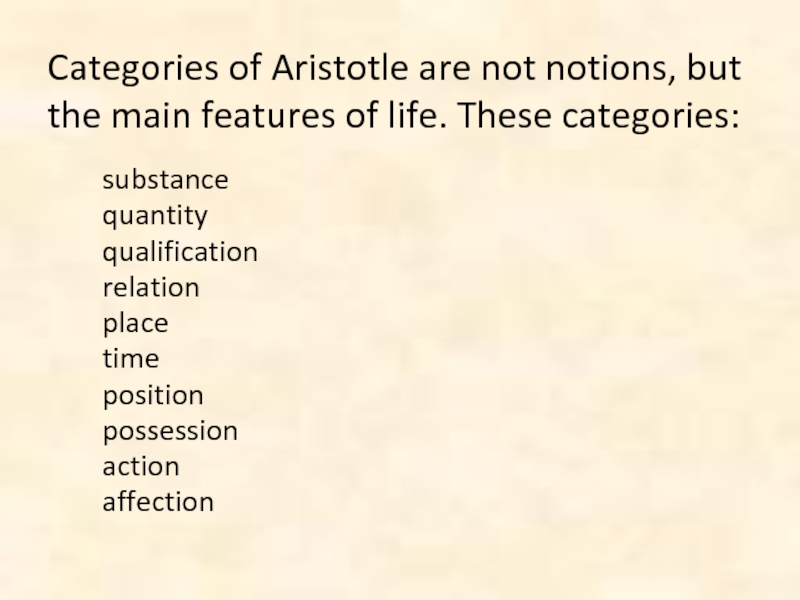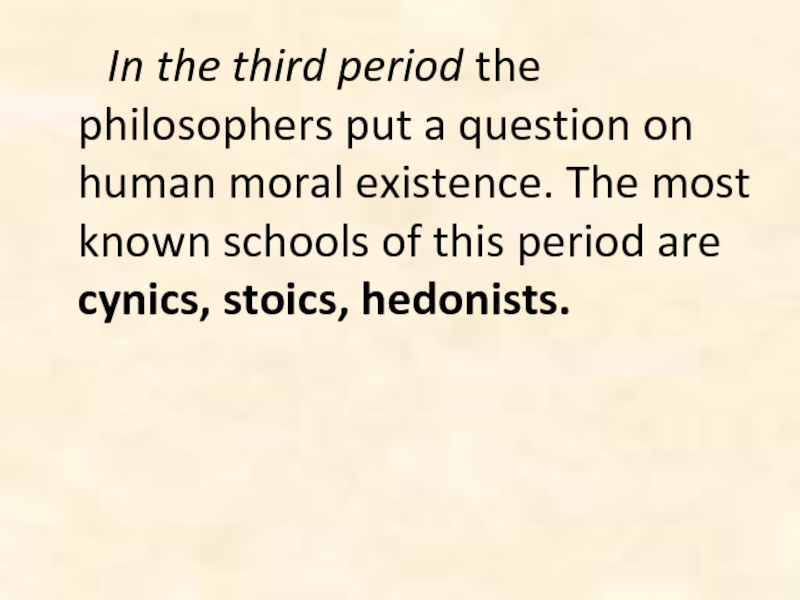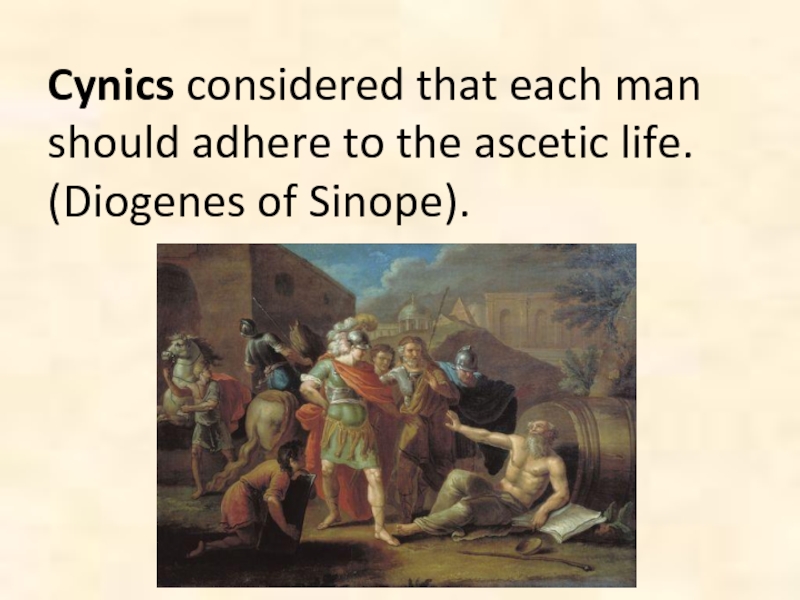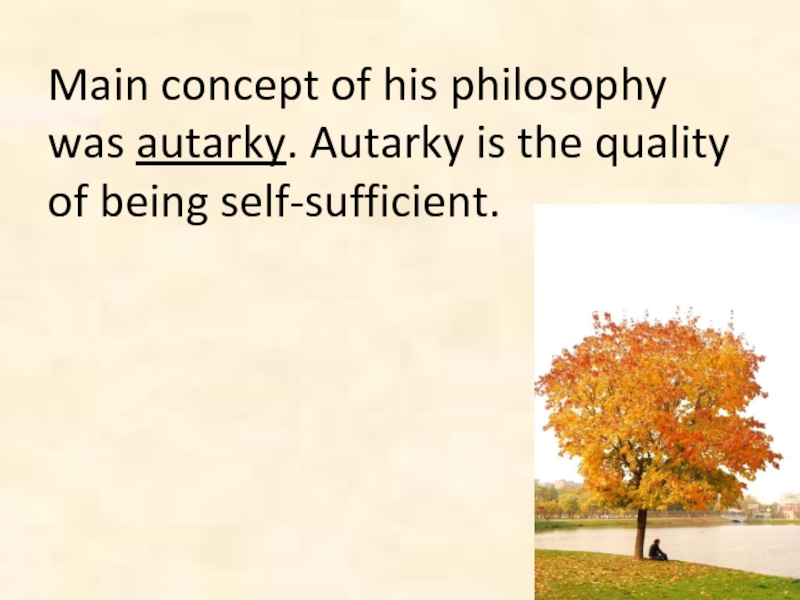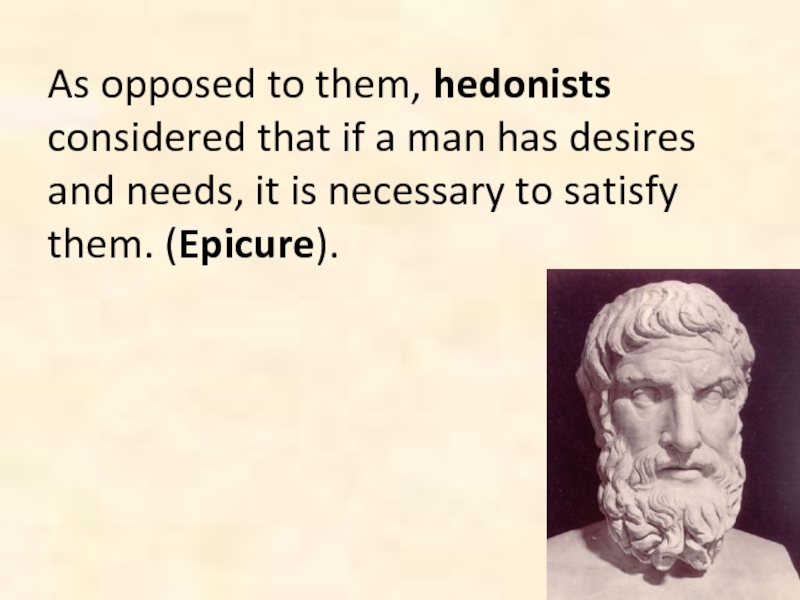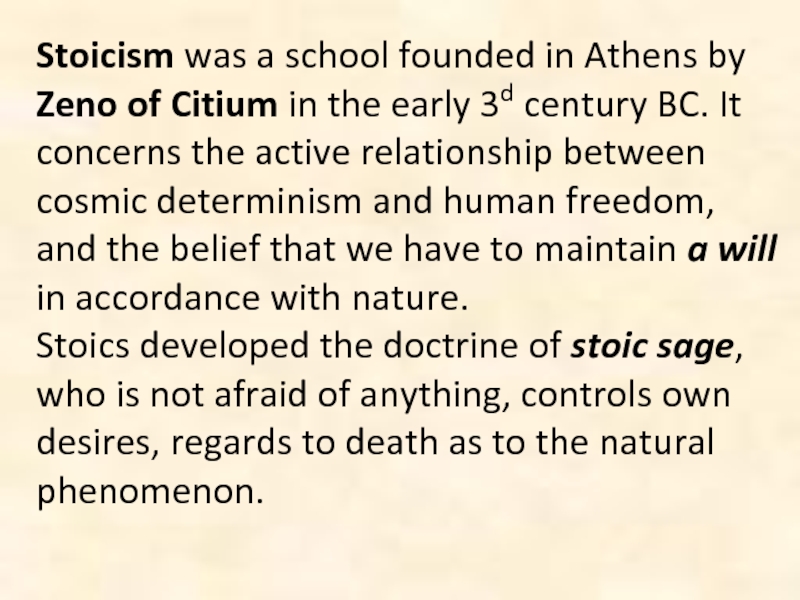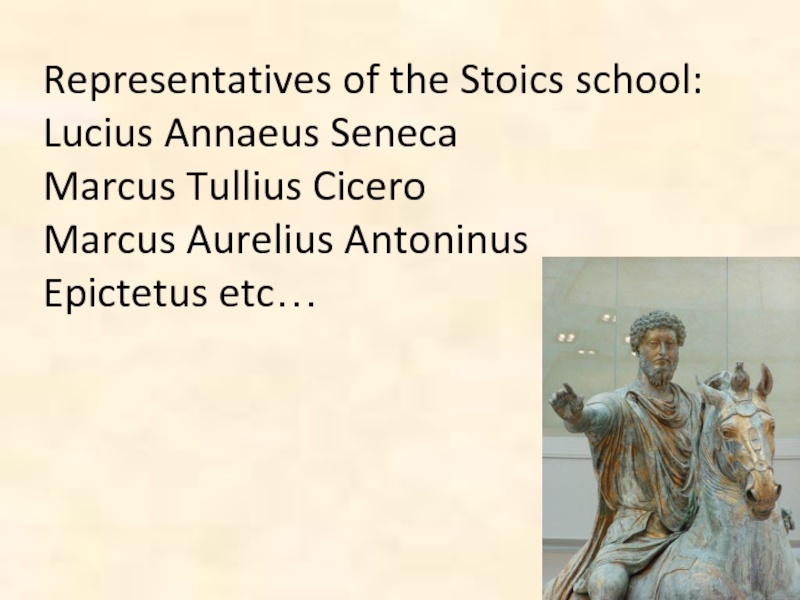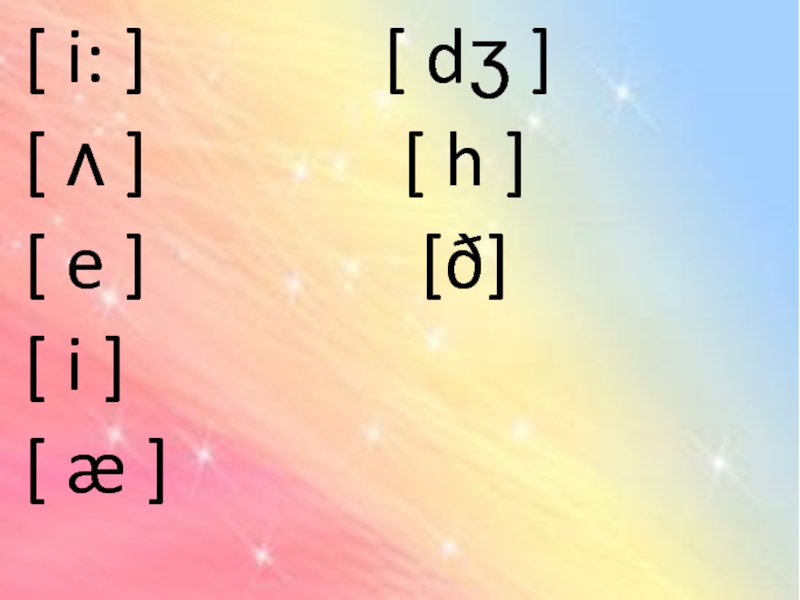- Главная
- Разное
- Дизайн
- Бизнес и предпринимательство
- Аналитика
- Образование
- Развлечения
- Красота и здоровье
- Финансы
- Государство
- Путешествия
- Спорт
- Недвижимость
- Армия
- Графика
- Культурология
- Еда и кулинария
- Лингвистика
- Английский язык
- Астрономия
- Алгебра
- Биология
- География
- Детские презентации
- Информатика
- История
- Литература
- Маркетинг
- Математика
- Медицина
- Менеджмент
- Музыка
- МХК
- Немецкий язык
- ОБЖ
- Обществознание
- Окружающий мир
- Педагогика
- Русский язык
- Технология
- Физика
- Философия
- Химия
- Шаблоны, картинки для презентаций
- Экология
- Экономика
- Юриспруденция
Ancient Greec-Roman philosophy. (Lecture 3) презентация
Содержание
- 1. Ancient Greec-Roman philosophy. (Lecture 3)
- 2. Ancient Greek and then Roman Mythology and
- 4. It originated in ancient Greek city states
- 5. Homer is the name of the Greek
- 6. Hesiod was an Ancient Greek poet. He
- 8. Of course, the early Greek philosophy is
- 9. For myth as non-reflexive forms of consciousness
- 10. The term of being associated with a
- 11. Investigation of first principles of fixity in
- 12. The Greek-Roman philosophy can be divided into
- 13. The criterion for such division was some
- 14. The basic problem of pre-Socratic period was
- 15. The first school, which tried to answer
- 16. He considered that water was original essence
- 17. Thales’ follower Anaximenes of Miletus. Anaximenes, like
- 18. He considered that firstprimary element was air,
- 19. Thales’ other follower was Anaximander. He became
- 20. Next school was Pythagoras’ school. Pythagoras
- 21. They also believed that the soul is
- 22. Following doctrine was the doctrine of Heraclitus
- 23. All things come into being by conflict
- 24. Heraclitus’ philosophy developed in ideological struggle with
- 25. They considered that there is no such
- 26. Zeno's paradoxes (aporia) are a famous
- 27. Achilles and the ‘tortoise In a
- 28. The arrow paradox the flying arrow is motionless.
- 29. Problem of movement solved Atomists, who shared
- 30. The second period is marked by change
- 31. Socrates (469 BC – 399 BC) was
- 32. Most of his issues were only political
- 33. He said that he, Socrates, was not
- 34. Socrates also taught that many people can
- 35. Socrates developed his philosophy in the struggle
- 36. Attention of the Sophists had been carried
- 37. One of the Socrates’ followers was Plato
- 38. Socrates is usually the main person in
- 39. One of Plato’s most famous works is
- 40. Plato describes being as eternal and immutable
- 41. Like Democritus, Plato spoke of the multiplicity
- 42. Plato also developed the myth of the cave.
- 43. A follower of Plato Aristotle (384-322) denied
- 44. In his “Metaphysics”, Aristotle elaborated a doctrine
- 45. Aristotle did not believe in Democritus’ theories
- 46. Categories of Aristotle are not notions, but
- 47. In the third period the philosophers put
- 48. Cynics considered that each man should adhere to the ascetic life. (Diogenes of Sinope).
- 49. Main concept of his philosophy was autarky. Autarky is the quality of being self-sufficient.
- 50. As opposed to them, hedonists considered that
- 51. Stoicism was a school founded in Athens
- 52. Representatives of the Stoics school: Lucius Annaeus
Слайд 2Ancient Greek and then Roman Mythology and Philosophy covers the period
of 11-12 centuries from 6-5 BC. till 5-6 AD.
Слайд 4It originated in ancient Greek city states of democratic orientation. Greek
philosophy distinguished from the ancient Oriental ways of philosophizing with mythological explanation of the world, in the beginning in the works of Homer and Hesiod’s writings.
Слайд 5Homer is the name of the Greek poet who wrote the
epic poems the Iliad and the Odyssey. These are the earliest works of Greek literature which have survived to the present day. The Iliad tells the story of the Trojan war, which took place around 1190 BC. The manuscripts of Homer were written much later, probably later than 800 BC.
Слайд 6Hesiod was an Ancient Greek poet. He is probably the second
Greek poet whose work (Theogony) has survived. He may have lived around 700 BC as a farmer. Today his writings are one of the main sources for everyday life in Ancient Greece, such as farming techniques, astronomy and ancient time-keeping.
Слайд 8Of course, the early Greek philosophy is closely linked with mythology,
with sensuous imagery and metaphorical language. However, it immediately search to consider relation of sensual images of the world and world as the infinite cosmos.
Слайд 9For myth as non-reflexive forms of consciousness the image of the
world and real world are incompatible (несовместимы).
Слайд 10The term of being associated with a variety of elements that
state in continuous change, and consciousness associated with a limited number of concepts, denied these elements in a stationary constant form.
Слайд 11Investigation of first principles of fixity in the changing cycle of
events of the i’mmense (шексіз) space was the main object for the first thinkers. Philosophy, therefore, appears as a doctrine of “first principles and causes” (Aristotle).
Слайд 12The Greek-Roman philosophy can be divided into three main periods:
Pre-Socratic covers
the period from 7th till 5th BC.
Classical (Hellenistic) covers the period from 5th till 2th BC.
Post-Socratic (Roman- Hellenistic) covers the period from 1th till 5-6th AD.
Classical (Hellenistic) covers the period from 5th till 2th BC.
Post-Socratic (Roman- Hellenistic) covers the period from 1th till 5-6th AD.
Слайд 13The criterion for such division was some basic problems, which were
put during a certain period.
Слайд 14The basic problem of pre-Socratic period was an outlook issue about
the ultimate substance of the world (Arche). The first question was “What is beginning of all things”?
Слайд 15The first school, which tried to answer this question, was the
Milesian school. Its founder was Thales of Miletus (624-546).
Слайд 16He considered that water was original essence of the world. It
meant that life is there, where water is. Eventually Thales’ rejection of mythological explanations of reality became an essential idea for science.
Слайд 17Thales’ follower Anaximenes of Miletus. Anaximenes, like others in his school
of thought, practised material monism, the idea that underlying reality is one single thing.
Слайд 18He considered that firstprimary element was air, midair because all exists
in the space of air.
Слайд 19Thales’ other follower was Anaximander. He became the second master of
the Milesian school where he counted Anaximenes and Pythagoras amongst his pupils. Anaximander tought as a basis a certain substation, which he named apeiron.
Слайд 20Next school was Pythagoras’ school.
Pythagoras of Samos (580/572 – 500/490
BCE) was a famous Greek mathematician and philosopher. He started a group of mathematicians, called the Pythagoreans, who worshiped numbers and lived like monks. They proclaimed their oaths by “1+2+3+4” (which equals 10).
Слайд 21They also believed that the soul is immortal and goes through
a cycle of rebirths until it can become pure. Pythagoras' most important belief was that the physical world was mathematical and that numbers were the real reality.
Слайд 22Following doctrine was the doctrine of Heraclitus of Ephesus, who put
in the basis of Universe the concept of movement. “All things come to pass in accordance with Logos”, “You cannot step twice into the same river”. Image of movement is fire.
Слайд 23All things come into being by conflict of opposites, and the
sum of things (ta hola, “the whole”) flows like a stream. Heraclitus’ work was “On Nature”, that was divided into three discourses, one on the universe, another on politics, and a third on theology."
Слайд 24Heraclitus’ philosophy developed in ideological struggle with the Eley School’s doctrine.
The most famous representatives of this school are Parmenides and Zeno of Elea.
Слайд 25They considered that there is no such phenomenon, as fundamental movement.
Movement is only aggregate of fragments. Emptiness is a basis for them.
Слайд 26 Zeno's paradoxes (aporia) are a famous set of thought-provoking stories
or puzzles. Zeno constructed them to answer those who thought the idea of Parmenides that “all is one and unchanging” was absurd.
Слайд 29Problem of movement solved Atomists, who shared the world on two
substations: emptiness and moving indivisible particles, which they called atoms. The most famous representatives of this school were Leucippus (Leukippos) and Democritus.
Слайд 30The second period is marked by change of the question. Henceforth
(отныне) philosophers brought up (ставить) “a question about the essence of human being”.
Слайд 31Socrates (469 BC – 399 BC) was one of the greatest
Greek philosophers. His work was to show how argument, debate, and discussion could help men to understand difficult issues.
Слайд 32Most of his issues were only political on the surface and
moral questions about how life should be lived. Socrates helped people to see what was wrong with their ideas.
Слайд 33He said that he, Socrates, was not wise, but he said
something like “I know what I don’t know.” In other words, he knew the limit of his knowledge. Socrates said that people who do bad things do so, because they don’t know any better.
Слайд 34Socrates also taught that many people can look at something and
not truly see it. He asked questions about the meaning of life and goodness.
Слайд 35Socrates developed his philosophy in the struggle with the Sophists, who
were a group of teachers of philosophy and rhetoric (Gorgias, Protagoras, Hippias). Plato opposed those sophists because they only abused wisdom for their own interest and refused the truth and justice.
Слайд 36Attention of the Sophists had been carried from Cosmos and nature
to the problems of man, society and knowledge. The Sophists believed that the world is not knowable, i.e., were agnostics.
Слайд 37One of the Socrates’ followers was Plato (427-348 BC), who considered,
that everything, including human, consists of things and ideas. Plato wrote his books in the form of dialogues.
Слайд 38Socrates is usually the main person in Plato’s dialogues. Usually, Socrates
talks with people about their ideas, and tries to see if they believe anything that is illogical. People who study Plato argue about whether Socrates really said the same things that Plato makes him say, or whether Plato just used Socrates as a character, to make the ideas he was talking about seem more important.
Слайд 39One of Plato’s most famous works is The Republic (In Greek,
Politeia, or “city”). In that work, he describes Socrates’ vision of an “ideal” state.
Слайд 40Plato describes being as eternal and immutable (тұрақты), knowable only by
reason and inaccessible to sensory perception.
Слайд 41Like Democritus, Plato spoke of the multiplicity of being. However, according
Plato “being” is the world of supersensible, unchanging and eternal ideas. Each thing has the idea. Ideas exist in the Sky, called Eidos Urania.
Слайд 43A follower of Plato Aristotle (384-322) denied the Plato’s doctrine, proving
that there is no world of ideas in the Sky. All consists of matter and form, even man.
Слайд 44In his “Metaphysics”, Aristotle elaborated a doctrine of four causes.
They
are:
Matter. That is eternal and internal essence.
Form. That is external essence. God-Mind gives forms to everything from matter.
Producing cause. Primary cause is God-Mind.
Final cause (aim). Everything has its own aim. The highest aim is Virtue.
Matter. That is eternal and internal essence.
Form. That is external essence. God-Mind gives forms to everything from matter.
Producing cause. Primary cause is God-Mind.
Final cause (aim). Everything has its own aim. The highest aim is Virtue.
Слайд 45Aristotle did not believe in Democritus’ theories about the atomic theory.
He thought that knowledge from the senses was more important.
Aristotle created a form of logic. His logic is called sentential logic because it uses sentences for the syllogism.
Aristotle created a form of logic. His logic is called sentential logic because it uses sentences for the syllogism.
Слайд 46Categories of Aristotle are not notions, but the main features of
life. These categories:
substance
quantity
qualification
relation
place
time
position
possession
action
affection
Слайд 47In the third period the philosophers put a question on human
moral existence. The most known schools of this period are cynics, stoics, hedonists.
Слайд 49Main concept of his philosophy was autarky. Autarky is the quality
of being self-sufficient.
Слайд 50As opposed to them, hedonists considered that if a man has
desires and needs, it is necessary to satisfy them. (Epicure).
Слайд 51Stoicism was a school founded in Athens by Zeno of Citium
in the early 3d century BC. It concerns the active relationship between cosmic determinism and human freedom, and the belief that we have to maintain a will in accordance with nature.
Stoics developed the doctrine of stoic sage, who is not afraid of anything, controls own desires, regards to death as to the natural phenomenon.
Слайд 52Representatives of the Stoics school: Lucius Annaeus Seneca Marcus Tullius Cicero Marcus Aurelius Antoninus
Epictetus etc…
